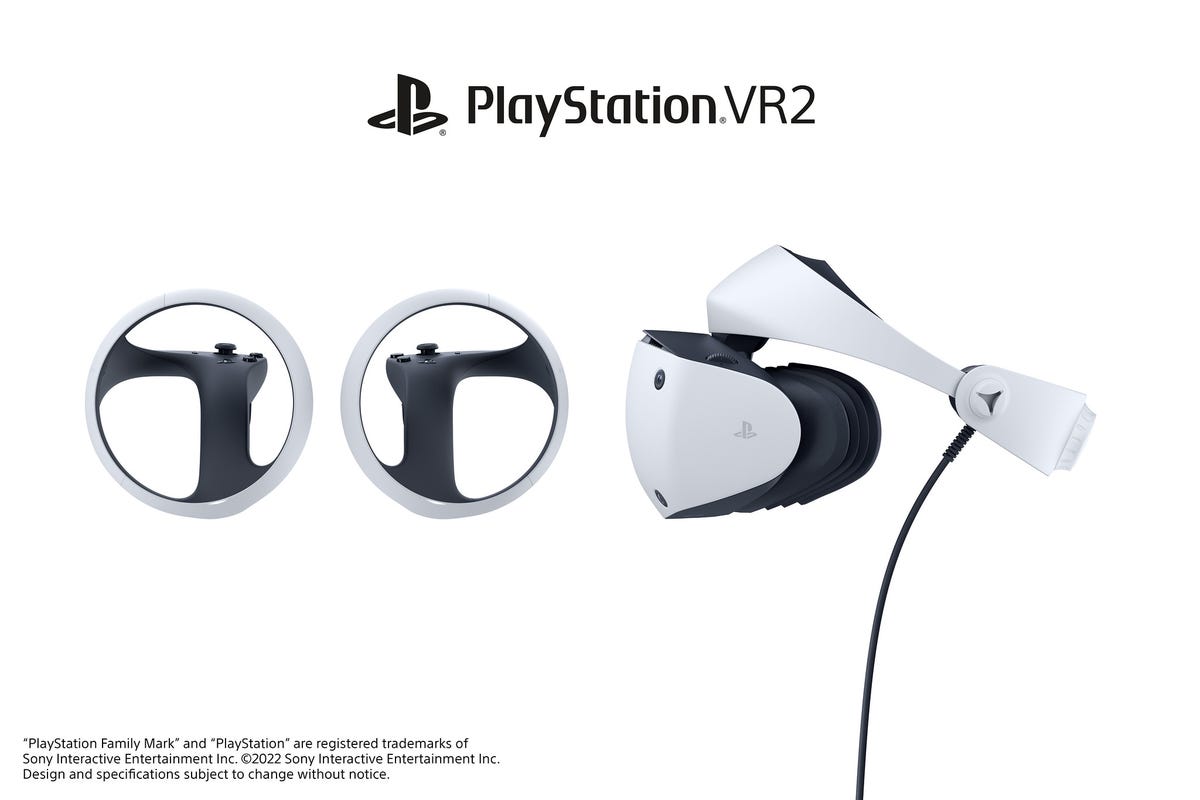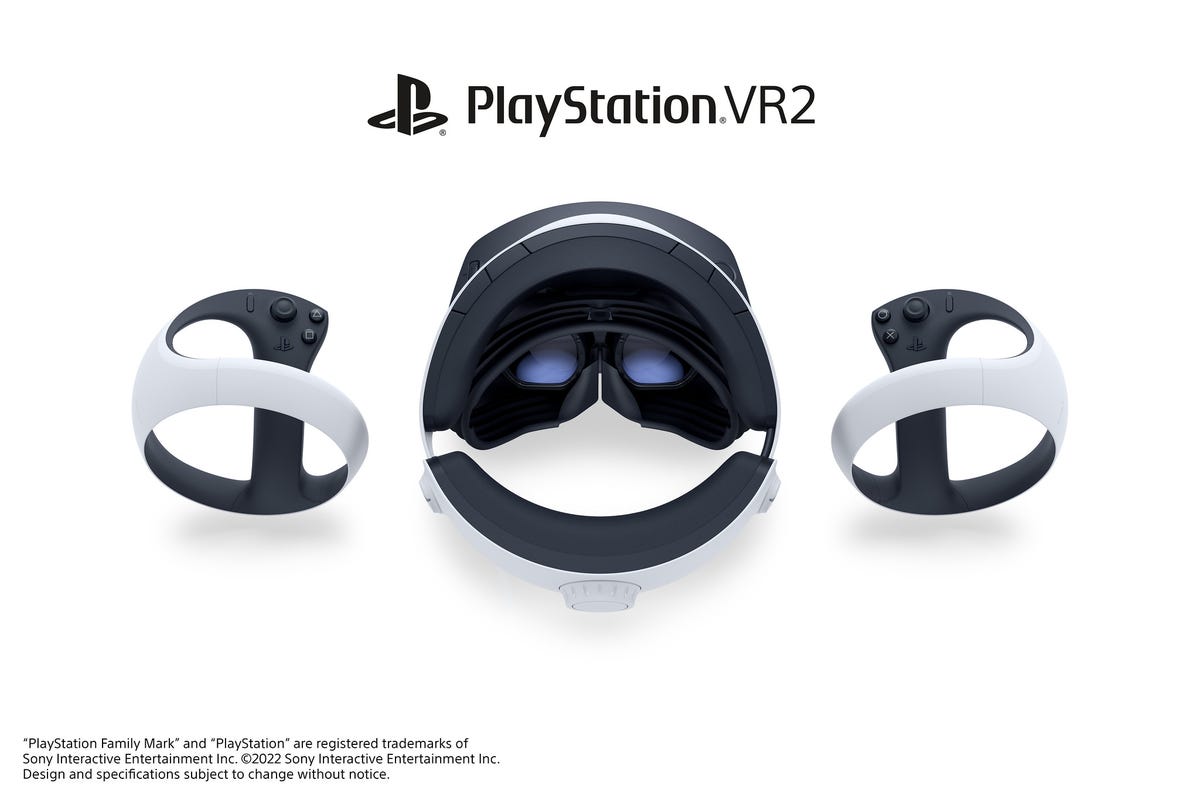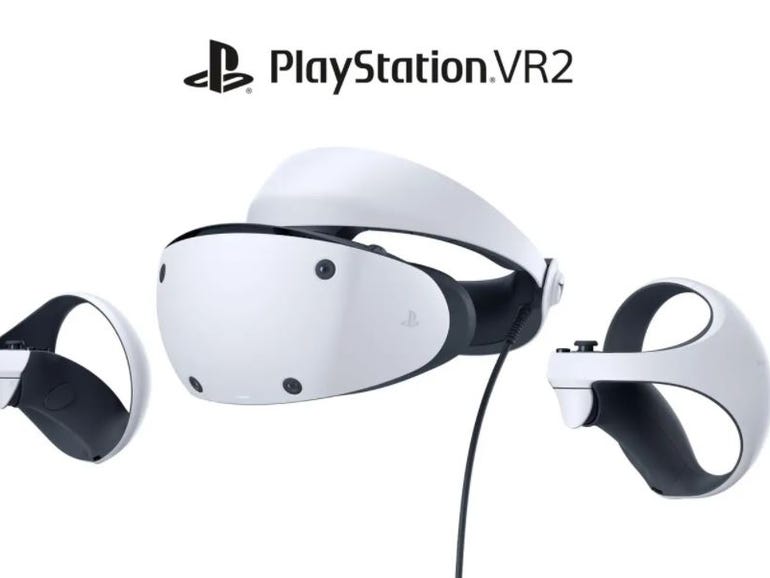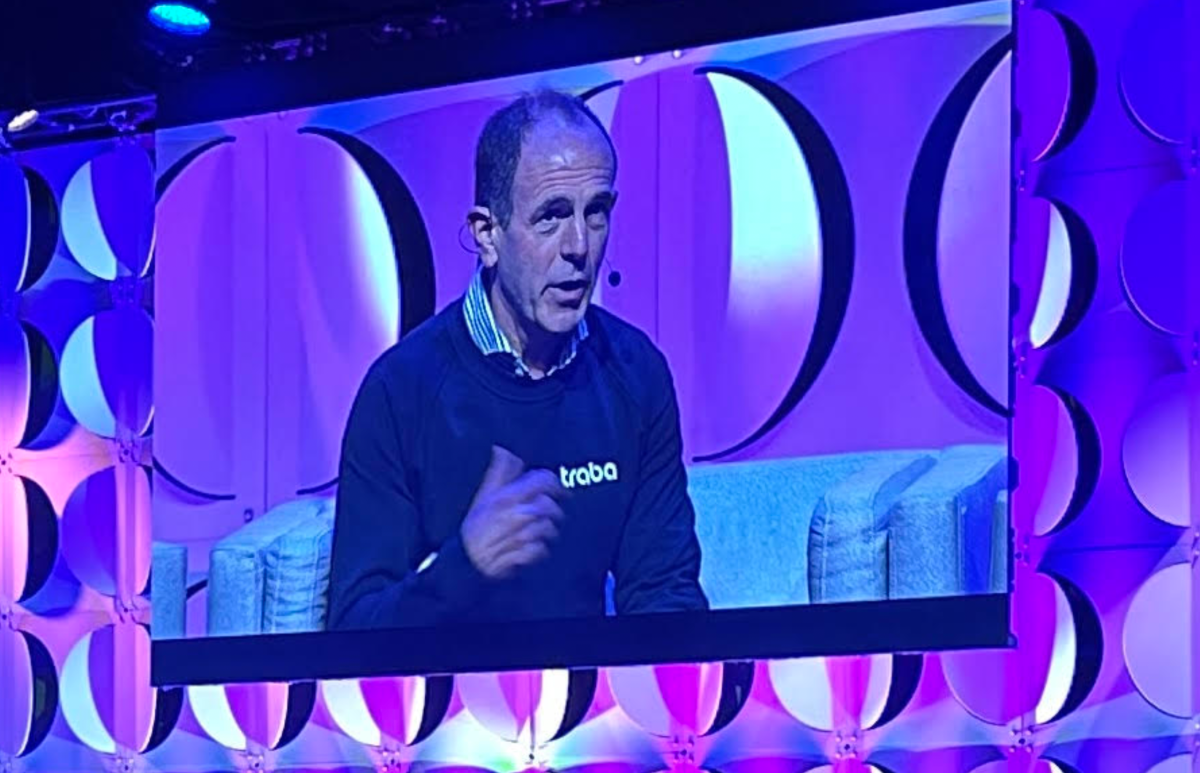Sony reveals first images of redesigned PlayStation VR2

Sony
Sony revealed its first images of the long-awaited follow up to the original PlayStation VR released in 2016.
The updated PlayStation VR2 mirrors the PlayStation 5’s aesthetics, leaning on the same black-and-white colorway across its headset and new Sense controllers, while reflecting a new “orb” aesthetic with its round shape and streamlined curves.
Sony once again opted for a halo-style headband, which distributes the weight of its included display hardware around the periphery of the user’s head, suspending the actual head-mounted display (HMD) from this ring. This differs from the head strap used in Meta’s Meta Quest 2 (formerly Oculus Quest 2) headset, which relies on a pair of elastic bands that wrap around and over the user’s head, holding the HMD against their face.
The halo band on the PlayStation VR2 also includes triangular openings at each adjustment point on its sides. These indents look suspiciously like the earbud holders that have shown up on some aftermarket replacement bands for competing VR headsets. However, Sony has yet to detail the audio output hardware or capabilities of this new unit.
The VR2’s built-in displays have also been upgraded to support 4K HDR content, as well as refresh rates of 90Hz or 120Hz across a 110-degree viewing area. Faster refresh rates in VR headsets don’t just increase the level of immersion and video smoothness, they also can be helpful to those prone to experiencing motion sickness in VR, with faster frame rates often producing fewer feelings of disorientation or nausea.
In addition to its enhanced visual prowess, the VR2 also packs several tricks neither its predecessor nor the Meta Quest 2 offers, including haptic feedback in the headset itself and eye-tracking. The latter upgrade should help the unit’s VR experience feel more natural while also opening up additional methods of interaction involving the user’s gaze.
That gaze should now be more correctly focused thanks to Sony’s addition of an IPD (Interpupillary Distance) dial which can move the individual eyepieces closer or further apart to better match the unique distance between each user’s eyes.

The new IPD adjustment dial can be seen on the top left of the HMD
Sony
The headset’s connectivity has also been revamped, with it now relying entirely on a single USB-C cable for both power and data.
Although the VR2 has seen significant changes to its HMD design, its Sense Controllers are completely new. They replace the aged, wand-shaped PlayStation Move Motion Controllers with a smaller, spherical form factor that wraps around the user’s grip to provide security and tracking capabilities for each hand.
Each controller includes a thumbstick, a trio of top-mounted buttons, a trigger, and a grip button.
Sony revealed that development kits for the new headset are already in the hands of game developers, but it did not specify when we might see the first VR2 games or the headset itself.
Pricing for the model also remains a mystery. The original PlayStation VR launched at around the $400 price point. However, the PlayStation VR2 must now compete with the likes of Meta’s $300 Meta Quest 2, which offers completely wireless VR, and does not require a $500 console (the PlayStation 5) to function.
Of course, the VR experiences on the Meta Quest 2 are somewhat limited by that headset’s more modest processing power. It remains to be seen how much Sony will weigh the PlayStation VR2’s increased graphical potential against the Quest 2’s mobility when settling on a price.



